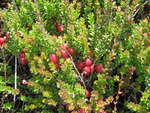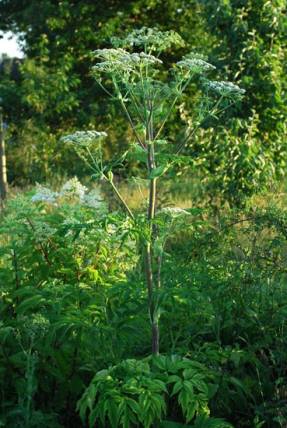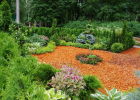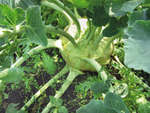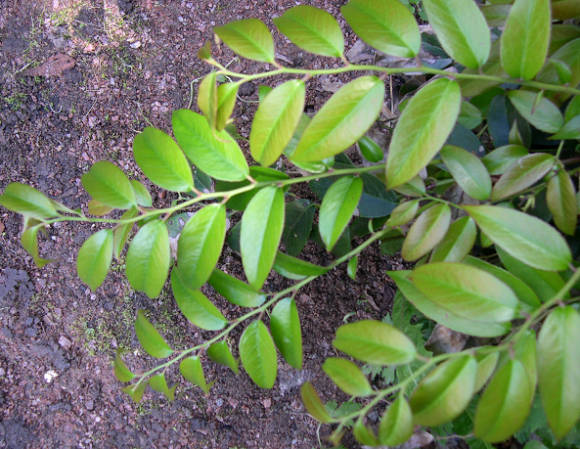Despite the fact that summer cottages are no longer the main source of production, a rare garden does without a pear or apple tree. And mistakes are just as common. Some gardeners are trying to fit almost the entire range on the market on a six-hundredth plot. Others - giving preference to now fashionable ornamental plants, "push" fruit trees and shrubs into a dark corner (so as not to spoil the expensive landscape).
As a result, there are a lot of costs, the garden seems to be there, but the end result is not encouraging. How to properly plan an orchard? What mistakes must be avoided in the very first stages in order to finally get what you really need?
The place of the garden cannot be changed

It is necessary to choose a place for a garden very carefully, since mistakes will appear only after a few years and it will be very difficult, and sometimes impossible, to correct them. It is important to take into account both general factors for planning the site (location of the site to the cardinal points, relief, direction of prevailing winds), and purely biological requirements.
For the cultivation of fruit and berry crops, it is necessary to allocate the sunniest places: most of them, of course, withstand light shading, but this negatively affects both the size of the crop and its quality. Lowered areas are of little use for a garden: cold air flows here, and 1-2 missing degrees during the flowering period can ruin the entire crop. Particularly dangerous are closed relief depressions - "saucers". Both excess moisture and air can stagnate in them. Lack of air drainage in winter leads to freezing, in spring - to damage to flowers and ovaries by frost, and in summer - to the development of fungal diseases.
The garden must be protected from cold winds with wind protection structures. Concrete or brick two-meter fences, so beloved by many, will successfully cope with this role (should there be at least some benefit from them?). Just make sure that they do not obstruct the flow of cold air.
Hard choise

What to plant in the garden? We want a lot, and the choice of plants on the market does not limit our desires. Three indicators will help you determine whether a particular crop will grow on your site, or it is better not to take risks. First, it is the sum of active temperatures (above + 100C), the number of days with temperatures above + 100C and the damaging temperature. The tables provided will help you make the right choice.
Requirements of horticultural crops to climatic conditions
Culture | Sum of active temperatures,0C | The number of days with temperatures above + 100C | Damaging temperature |
Apple tree (highly winter-resistant varieties) | |||
summer | 1800 | 125 | -35…-40 |
autumn | 2000 | 140 | |
winter | 2200 | 150 | |
Apple tree (medium-hardy varieties) | |||
summer | 2000 | 140 | -30…-35 |
autumn | 2200 | 155 | |
winter | 2400 | 165 | |
Pear | |||
summer | 2200 | 145 | -25…-30 |
autumn | 2400 | 160 | |
winter | 2600 | 180 | |
Plum | |||
early varieties | 1800 | 130 | -30…-35 |
late varieties | 2000 | 140 | |
Cherries and berries | less than 1700 | up to 115 | |
Apricot* | 2600-2800 | 150-160 | -23…-28 |
Cherries* | 2700-2900 | 160-170 | -25…-30 |
Grape | |||
very early varieties | 2200-2400 | 110-120 | -24…-26 |
early varieties | 2900-3200 | 130-140 | -22…-24 |
* Some modern varieties of apricot and sweet cherry are less demanding on heat and more winter-hardy, therefore they can be cultivated in more northern areas.
Climatic characteristics of a number of regions of the central part of Russia
Region | Sum of active temperatures, 0С | The number of days with temperatures above + 100C |
Moscow | 1800-2200 | 125-140 |
Kaluga | 2000-2200 | 130-145 |
Tula | 2000-2200 | 135-140 |
Ryazan | 2150-2350 | 140-145 |
Vladimirskaya | 1900-2200 | 135-140 |
Tverskaya | 1750-1950 | 125-135 |
Yaroslavl | 1800-2000 | 120-125 |
The figures given for climatic conditions are average and can vary significantly from year to year. In addition, other factors also influence the success of cultivation: the orientation of the slope relative to the cardinal points, the proximity of the reservoir, and the peculiarities of the microclimate. In favorable years and with a good location of the site, you can get a harvest of more southern breeds and varieties, but otherwise you will inevitably be left without a crop.
If the climatic conditions are not optimal, some tricks can be used to improve the situation. For example, grafting southern varieties into the crown of a winter-hardy variety will allow them to survive the winter, and planting on the southern side of a wall or fence will add a couple of hundred degrees of active temperatures, so necessary for heat-loving plants.
The level of occurrence of groundwater has a great influence on the choice of crops. If they are closer than 2 m, then this place is unsuitable for apple trees on vigorous rootstocks and pears. Cherries, plums and apple trees on dwarf rootstocks feel satisfactory when the water is no closer than 1.5 m, berry bushes - up to 1 m, and when the water reaches 0.5 m, only strawberries can be grown.
If you do not timely determine the level of groundwater occurrence, then the plants themselves will "inform" about the unsuitability of the site: in a few years, when the roots reach the water, they will begin to ache and wither. If the water is close, but you still want to have fruit trees, then you can plant them on ridges or mounds.
"How much to hang in grams?"

So, you have decided on the assortment. But how many trees or shrubs to plant? If you do not want the crop to be mummified on plants, since it is not possible to eat it through the efforts of your family and friends, it would not hurt to know the yield and, based on it, calculate a sufficient (and not excessive) planting area. Remember that from 1 m2 you can collect: 1 kg of strawberries, 1-1.5 kg of raspberries, 2 kg of black currants and cherries, 3 kg of red currants, gooseberries and plums, up to 4-5 kg of apples and pears. These are average numbers, a good gardener will collect more. Based on your needs, you can determine how much area a particular crop should occupy in your garden.
It is also important to decide on the number of varieties. Firstly, you can be left without a crop, as for most crops, re-pollination is required; secondly, several varieties will extend the period of fruit consumption (for example, apple consumption can last from June to May). To create varietal diversity, you do not need to plant a dozen trees, you can plant individual branches.
When planting actinidia and sea buckthorn, keep in mind that 4-5 female plants need one male.
Everything has its place

In order to make the most of the sun's rays, layered plantings are recommended: in the south - low strawberries, then currants and gooseberries, then stone fruits; in the north - the tallest: apple and pear.
At the southern walls, where the plants receive additional heat, which is reflected by the wall, plant the most heat-loving plants - grapes, cherries, apricots. Dessert varieties, in which the main thing is appearance, taste and aroma, require the sunniest places.
Berry bushes and vines are best planted as a hedge: black currant, lemongrass - after 1 m, red currants and gooseberries - after 1.5 m, actinidia - after 2 m.Raspberries are usually placed in rows after 2 m, in a row - after 0.4 - 0.7 m; sea buckthorn and chokeberry - according to the scheme 3x2-2.5 m.
It is difficult to place fruit trees, since the planting scheme depends on the growth force of the scion and rootstock, as well as on the formation and pruning of the crown. Optimal lighting is created in small-sized rounded and vertically flattened crowns, the width of which does not exceed 2 - 2.5 m. Cherries are planted according to a 2-3x3 m scheme, plums - 3x3 m, cherries as a vigorous crop - even less often. An apple tree on medium-sized rootstocks (height up to 3.5 m) requires a planting scheme of 4-4.5x2.5-3, on dwarf (height up to 2.5 m) - 3-3.5x1.5-2.5 m, and Here, in a columnar form, only 1-1.5 m2 is enough.
Planting patterns should closely match the final plant sizes after a few years. A typical mistake many gardeners make is planting thickening. In such a garden, you cannot pass because of the intertwined branches, lichens are on the trunks, dampness contributes to the development of diseases. When planting thin twigs, try to look into the future, because trees grow for 20-30 years or more, berry bushes - 10-15.
Fruit garden with taste

Gardens and berry fields are usually planned in a regular (symmetrical) style, which is considered not very decorative. However, well-groomed fruit trees and berry bushes are very attractive in themselves, especially during flowering and fruit ripening.
It is fashionable to increase decorativeness with the help of such crown forms as cordons and palmettes. Due to their laboriousness in industrial gardens, they are practically not used, but for decorative purposes in private plots they are simply irreplaceable, especially in wall culture. In addition, such crown shapes allow more economical use of the area.
Berry crops are also very beautiful and irregularly formed. For example, chokeberry, grafted onto a rowan stem, forms original spherical crowns. Red currants and gooseberries can be grown in half-stem (leaving 1-2 powerful branches) or standard (by inoculating golden currant in the stem) forms. Red currants are very decorative in the form of a wall on a trellis. Finally, there are decorative and fruit crops, for example, Japanese quince (henomeles).
Vadim Lebedev, (Based on the materials of the magazine "Stylish Garden", No. 12/1, 2004/2005)

